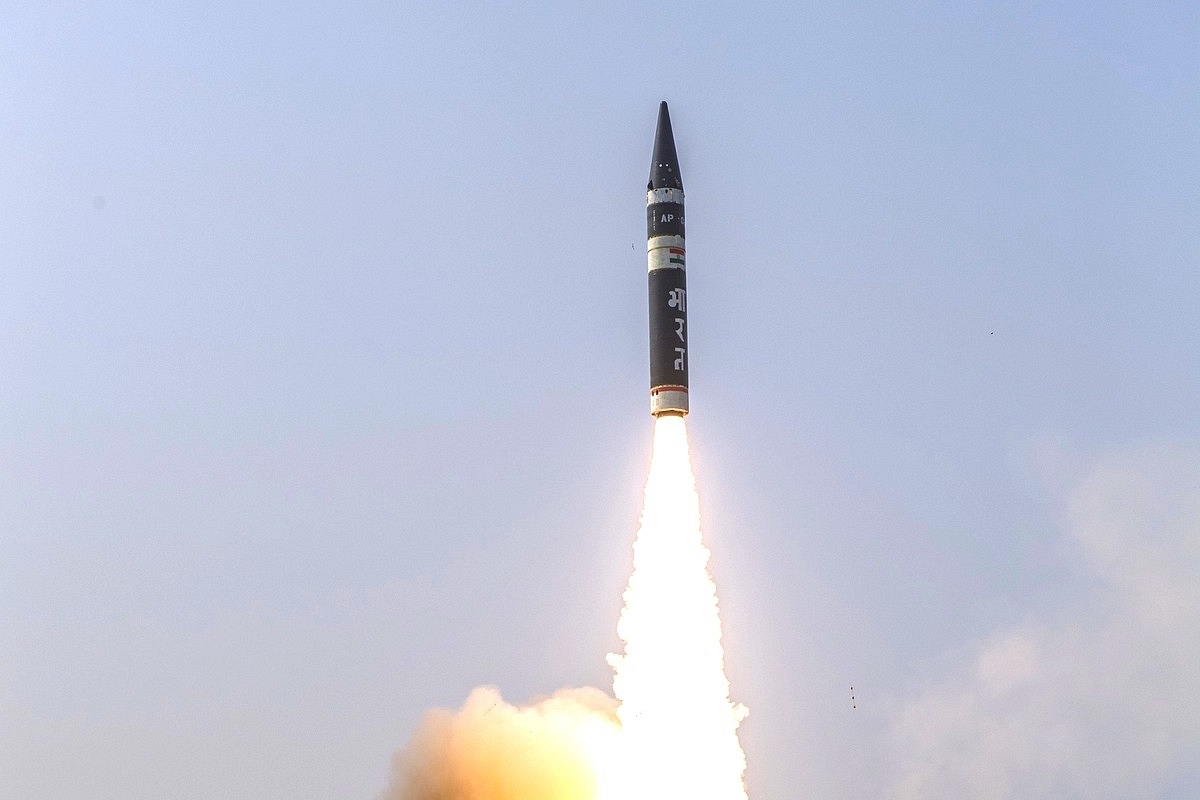Defence
Agni Prime Missile Triumphs In First Pre-Induction Night Test, Clearing Path For Induction

Agni Prime, the latest addition to the Agni ballistic missile series.
Agni Prime, the latest addition to the Agni ballistic missile series, underwent a successful flight test conducted by the Defence Research and Development Organisation (DRDO) from Dr APJ Abdul Kalam Island off the coast of Odisha on June 7, 2023.
This marked the first pre-induction night launch by the users following three successful developmental trials of the missile, affirming its accuracy and reliability.
The Ministry of Defence stated that senior officials from DRDO and the Strategic Forces Command observed the test, which has cleared the path for the system's induction into the Armed Forces.
According to the Ministry, the missile possesses a range of 1,000 to 2,000 kilometers.
The Agni Prime is a two-stage, surface-to-surface, road-mobile medium-range ballistic missile fueled by solid propellants. It is transported via a truck and launched using a canister.
Many experts believe that the high accuracy and manoeuvrability of the missile could make it useful in targeting aircraft carriers in the Indian Ocean.
"From whatever I have read, I think it's a maneuvering warhead and it can maneuver after reentry. So it can hit targets which are moving, for example ships. You might have heard of Chinese capability to hit aircraft carriers at long distances. [inaudible] systems give you that kind of capability," Dr Avinash Chander, former director-general of DRDO, told StratNews Global Editor-in-Chief Nitin Gokhale in a recent interview.
The new missile uses some technologies that the DRDO has developed for the long-range Agni-IV and Agni-V nuclear-capable ballistic missiles.
Agni Prime comes in a canisterised configuration, which significantly enhances the mobility of the missile and makes launch easier.
In canisterised configuration, the warhead can be permanently mated with the missile instead of having to be installed prior to launch. As a result, canisterisation significantly reduces the time required to launch a missile and improves the ability of the forces to respond to an attack quickly. Canisterisation also increases the reliability of a missile and its shelf-life.
For canisterisation, a missile mated with a nuclear warhead is sealed in a canister, which is placed atop a road-mobile launcher.
In the past, India has tested Agni-5 intercontinental ballistic missile in canisterised configuration. The missile has a range of over 5,500 km.
A canisterised missile can be fired directly from the canister or cylindrical container containing the missile by elevating it.
Support Swarajya's 50 Ground Reports Project & Sponsor A Story
Every general election Swarajya does a 50 ground reports project.
Aimed only at serious readers and those who appreciate the nuances of political undercurrents, the project provides a sense of India's electoral landscape. As you know, these reports are produced after considerable investment of travel, time and effort on the ground.
This time too we've kicked off the project in style and have covered over 30 constituencies already. If you're someone who appreciates such work and have enjoyed our coverage please consider sponsoring a ground report for just Rs 2999 to Rs 19,999 - it goes a long way in helping us produce more quality reportage.
You can also back this project by becoming a subscriber for as little as Rs 999 - so do click on this links and choose a plan that suits you and back us.
Click below to contribute.
Latest